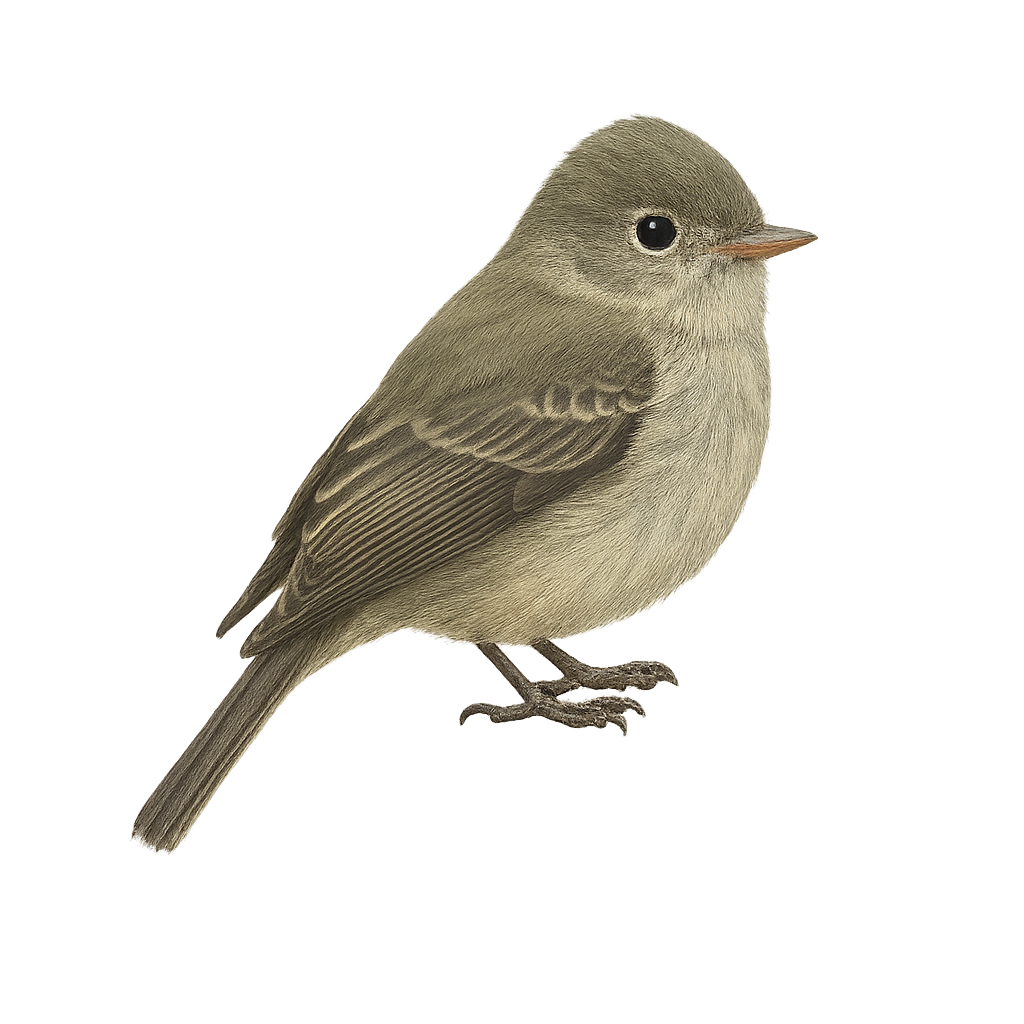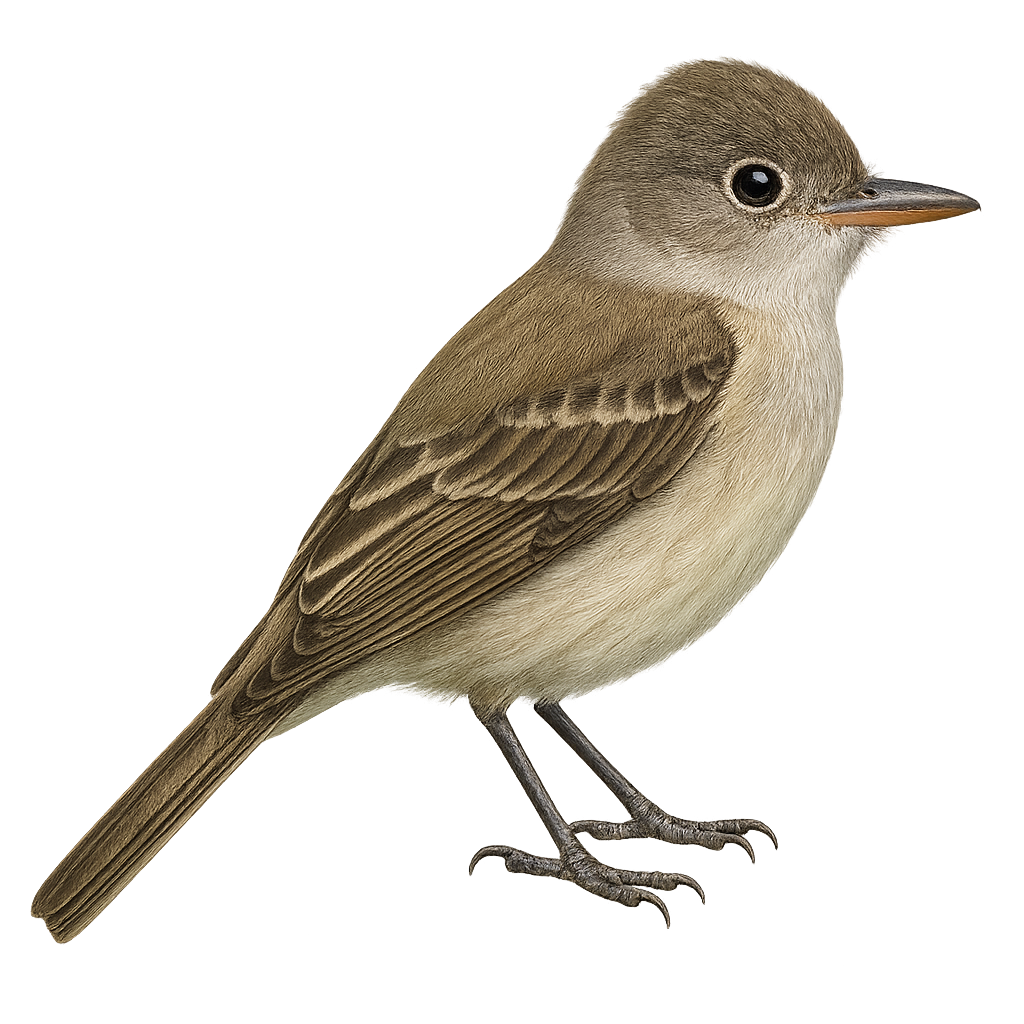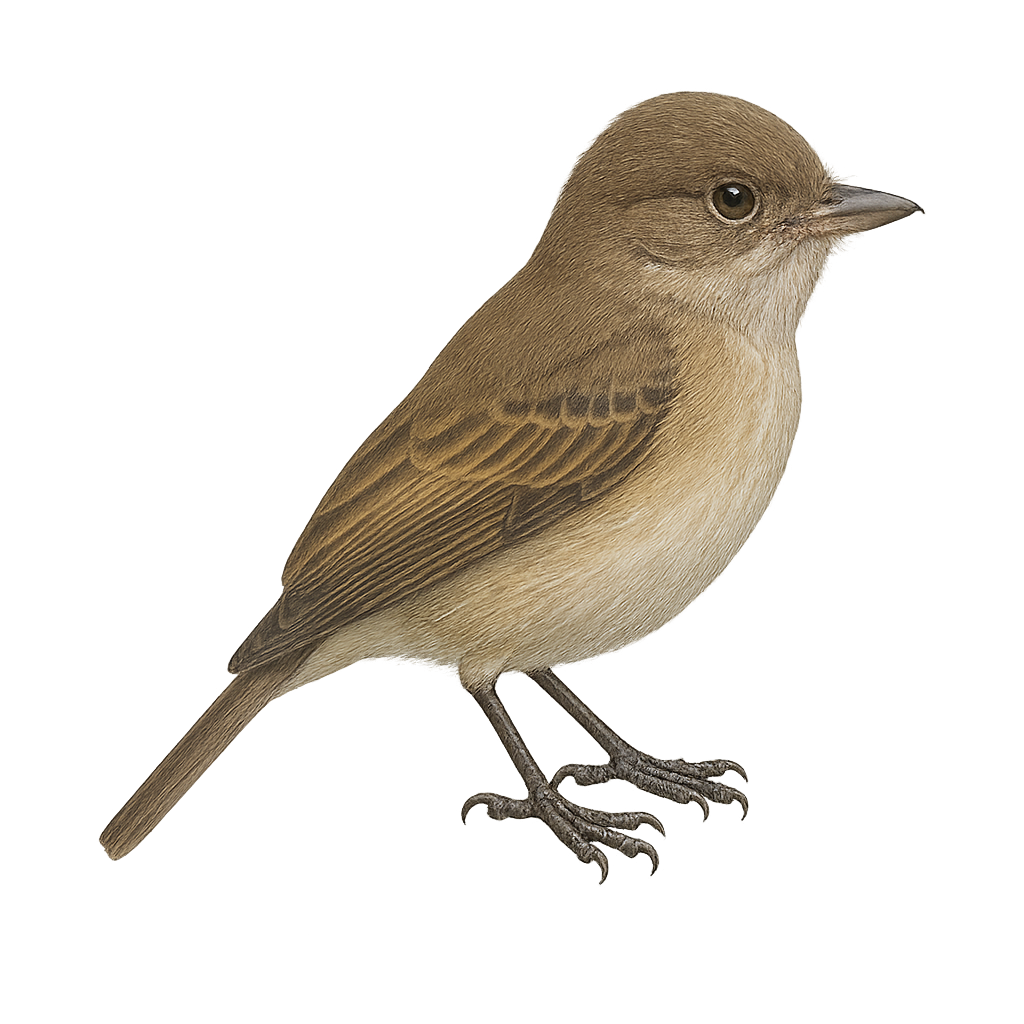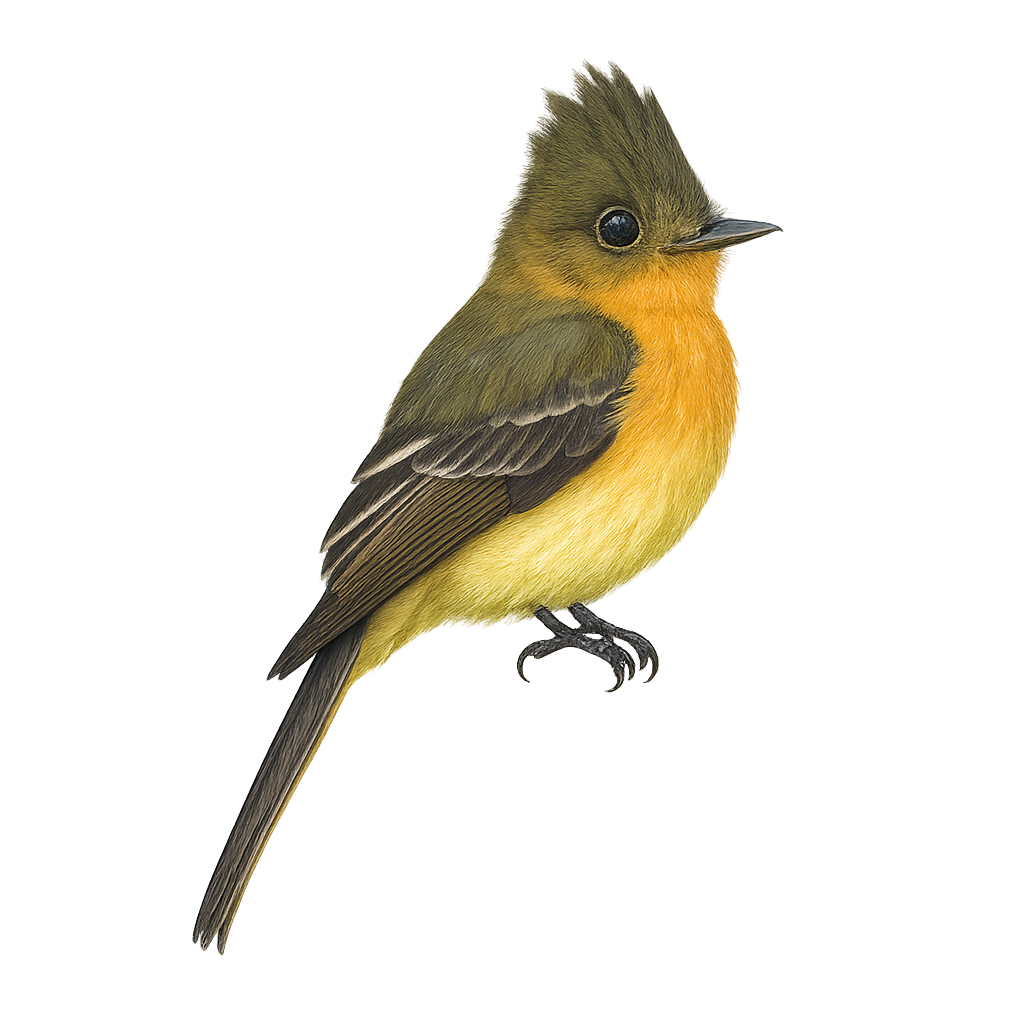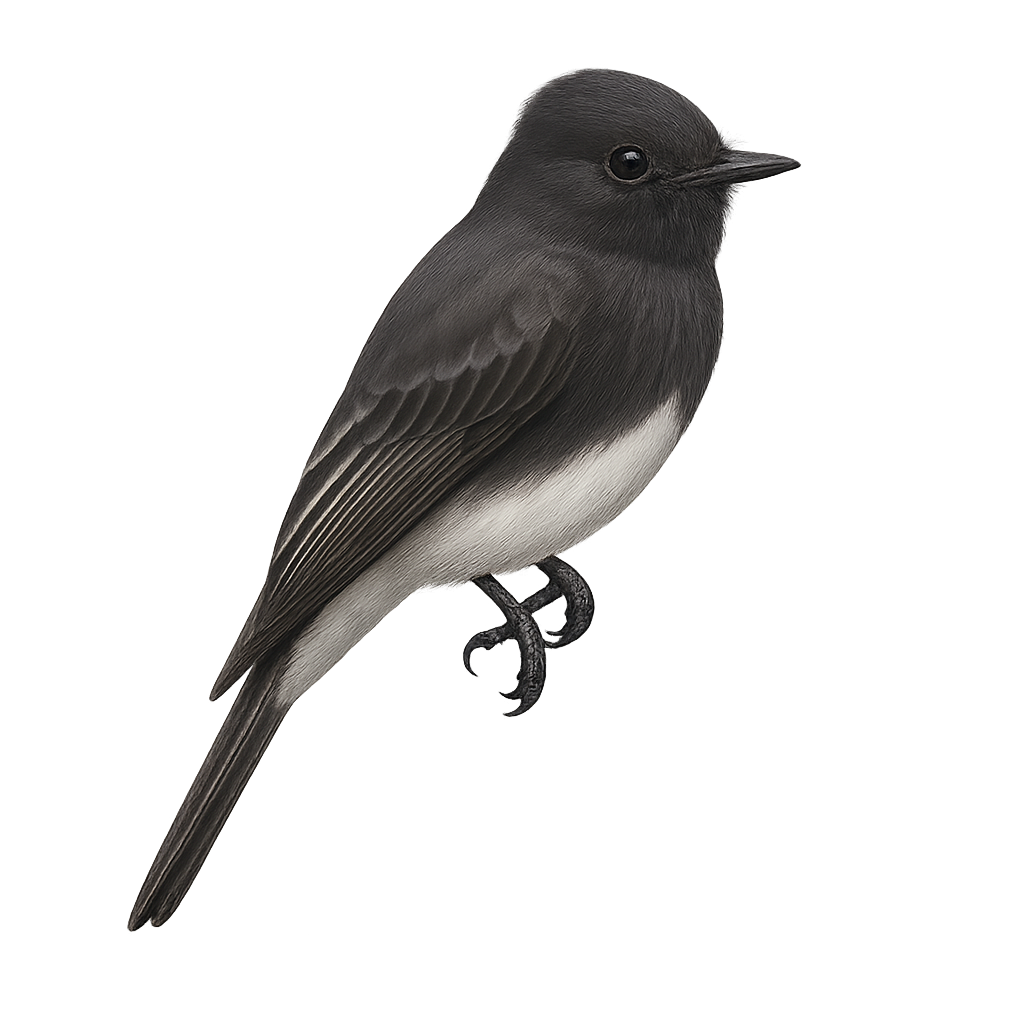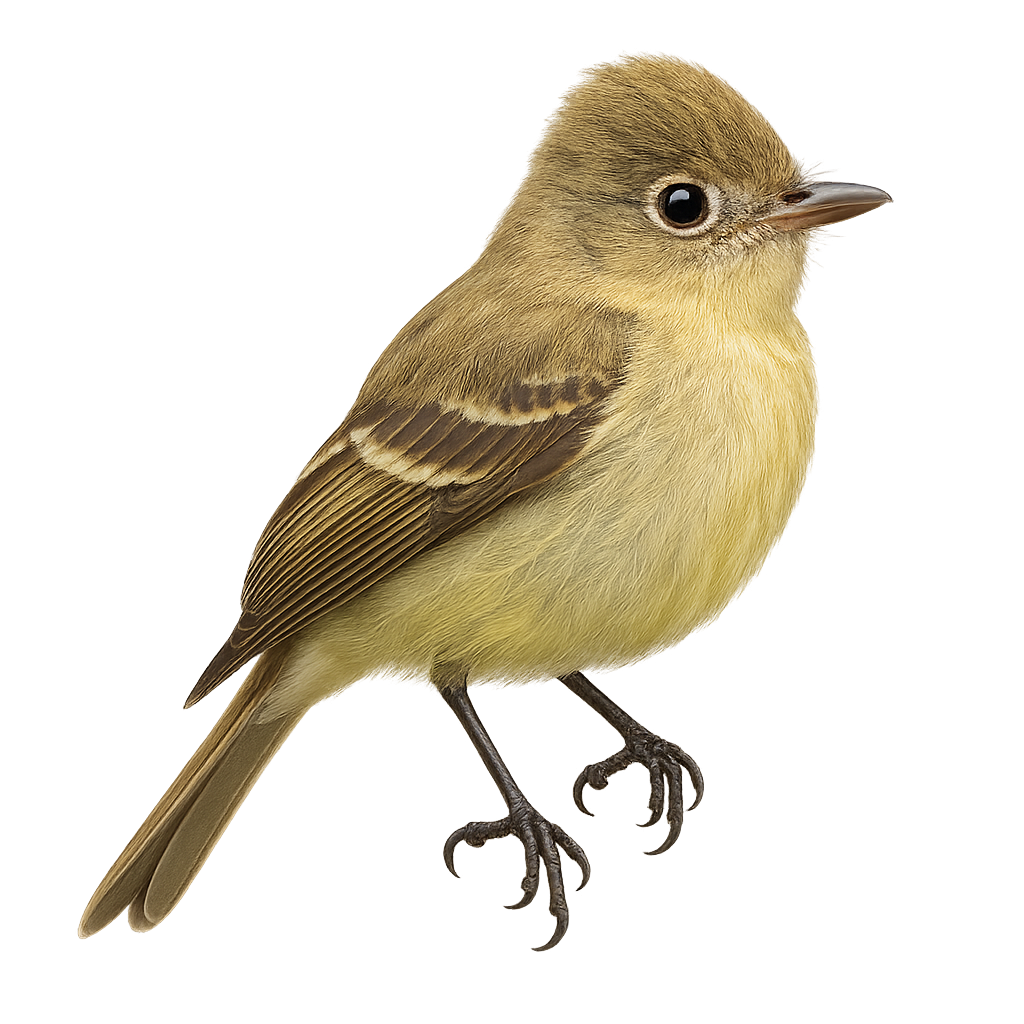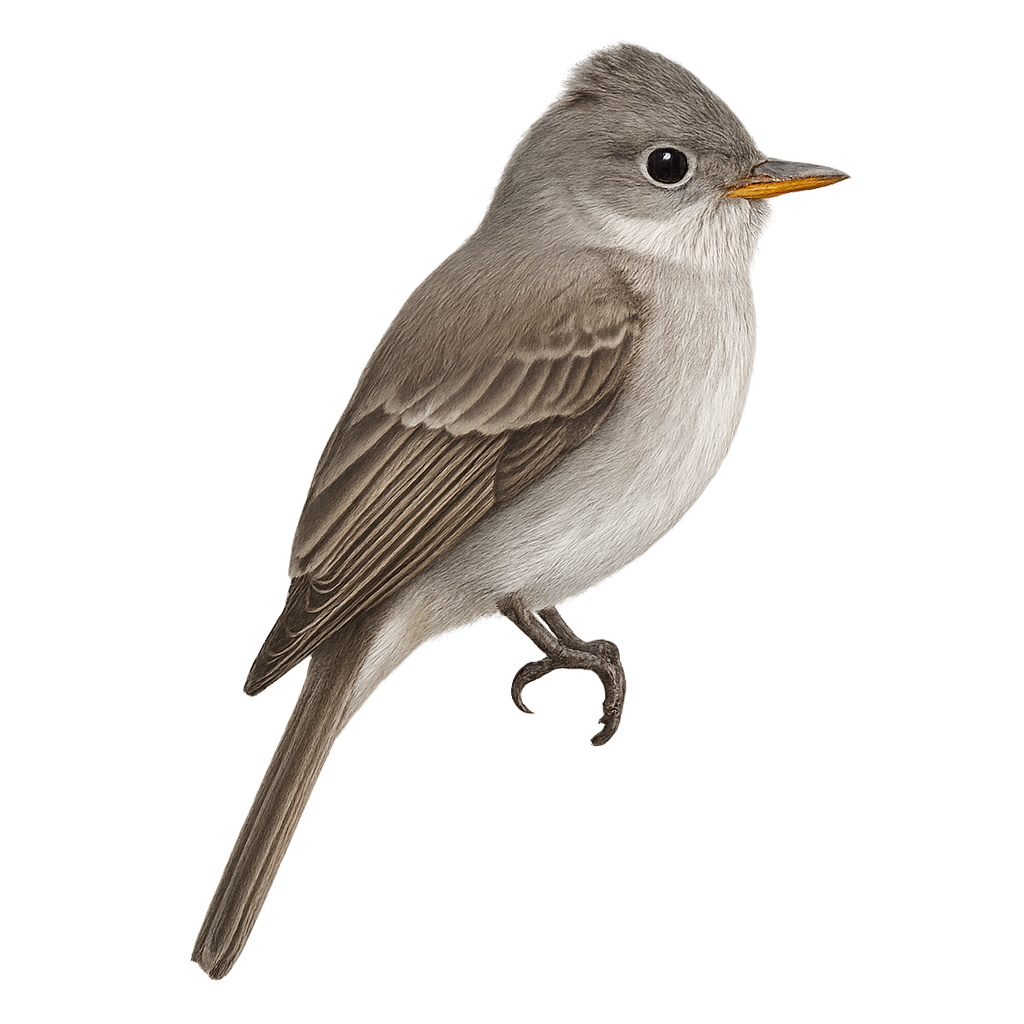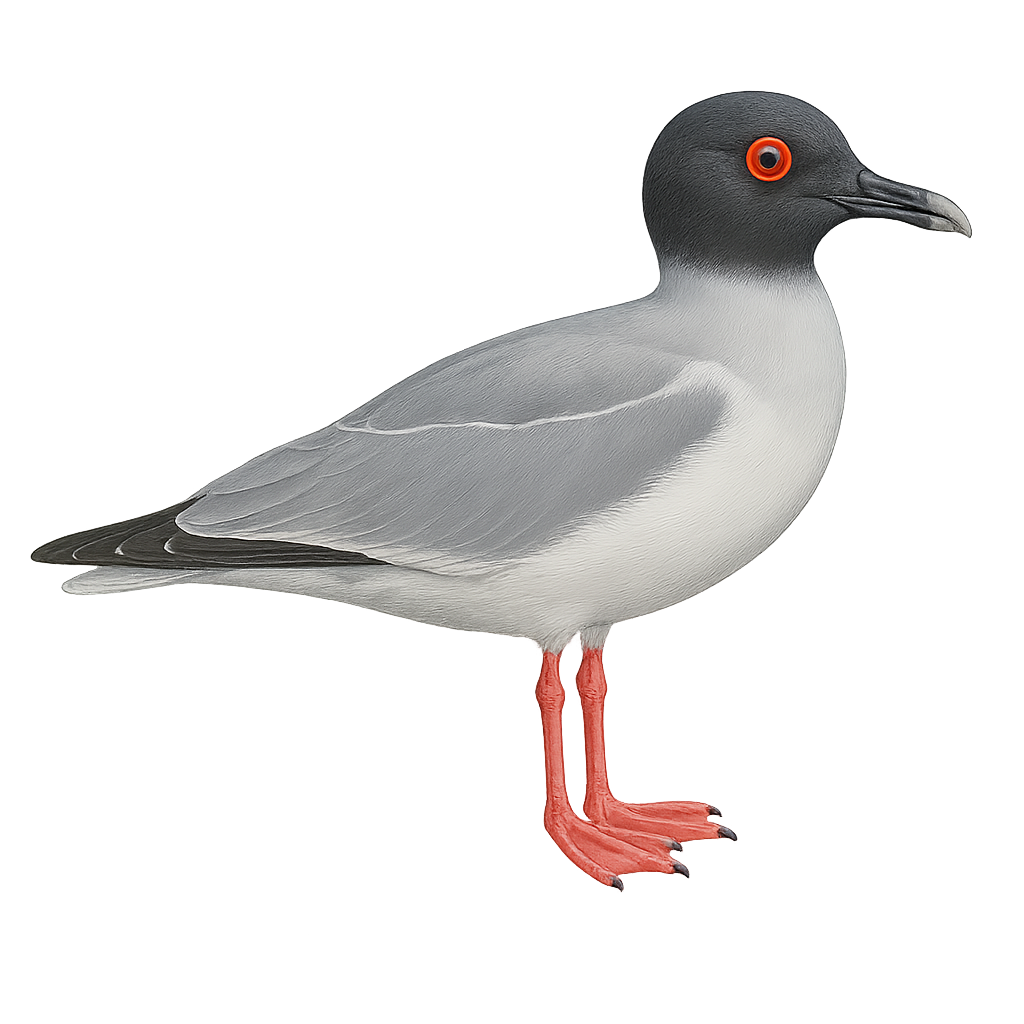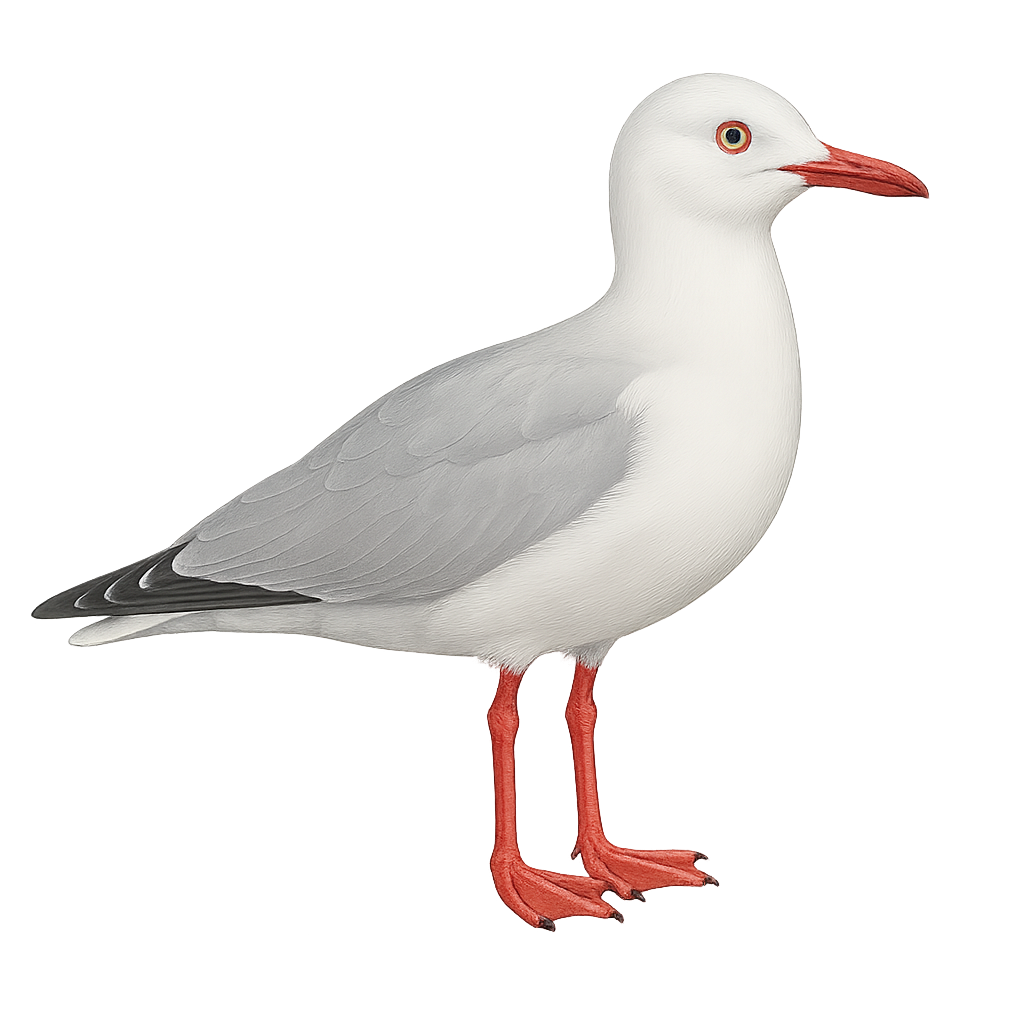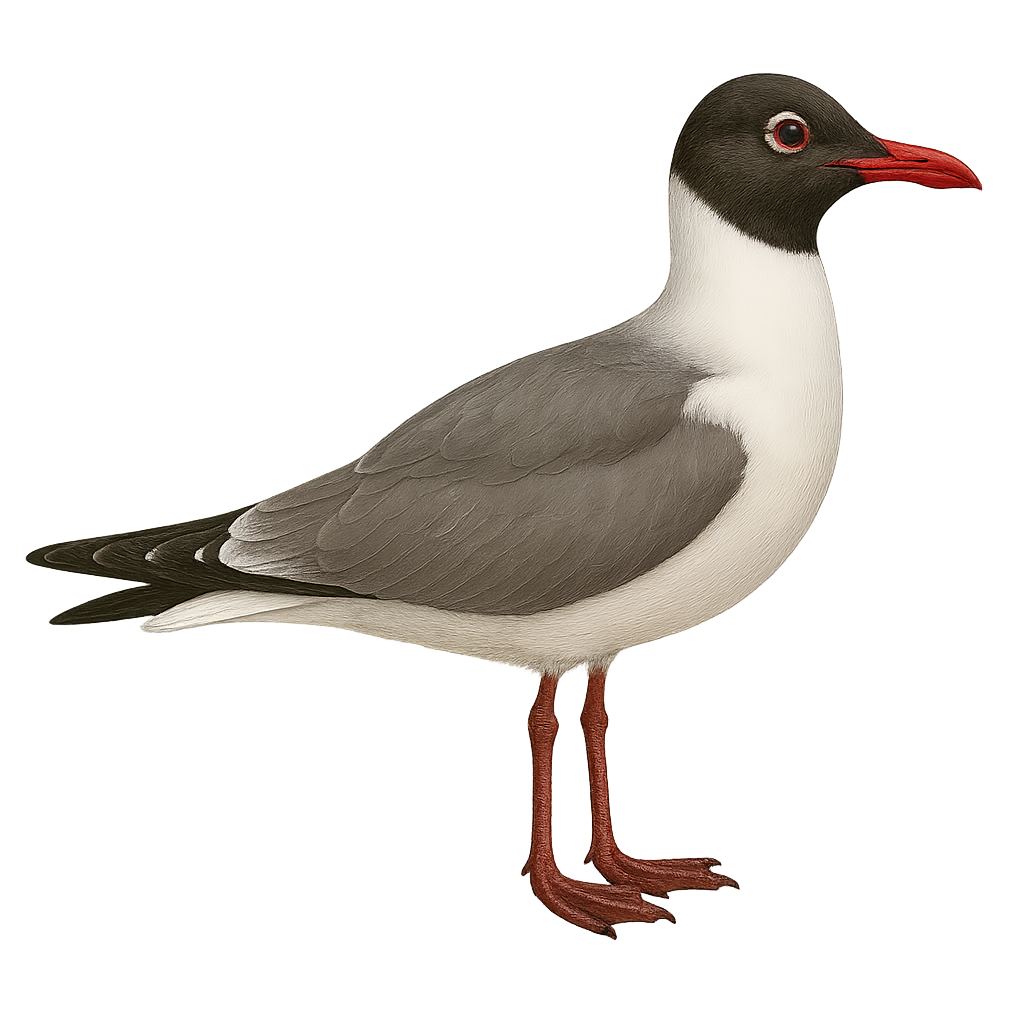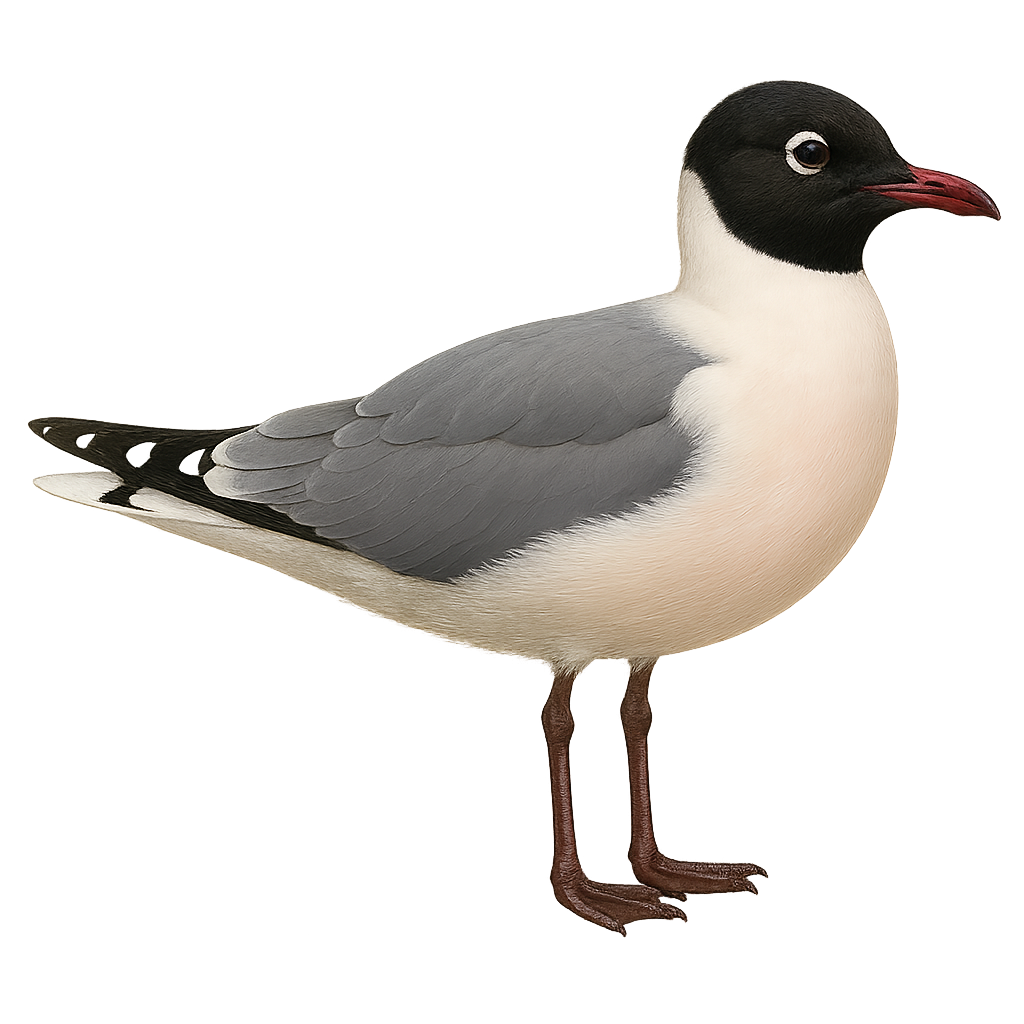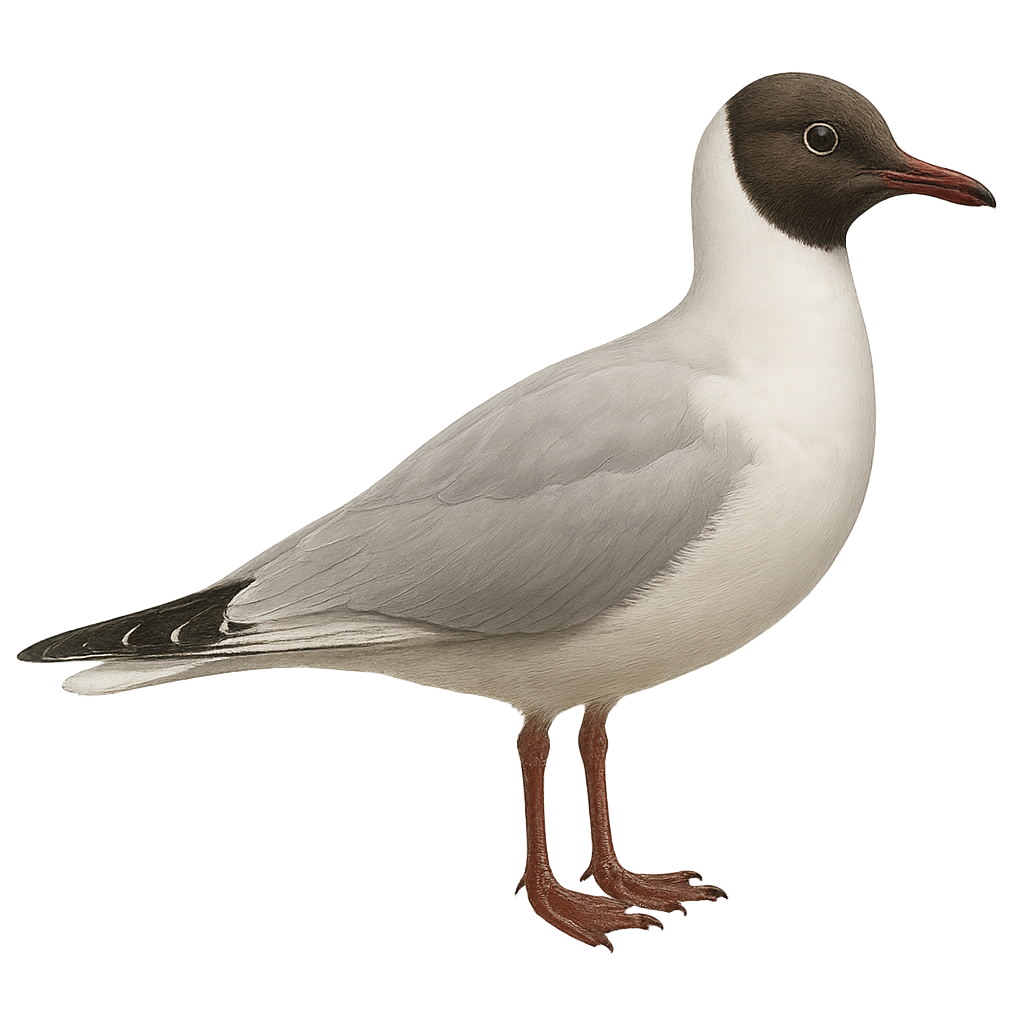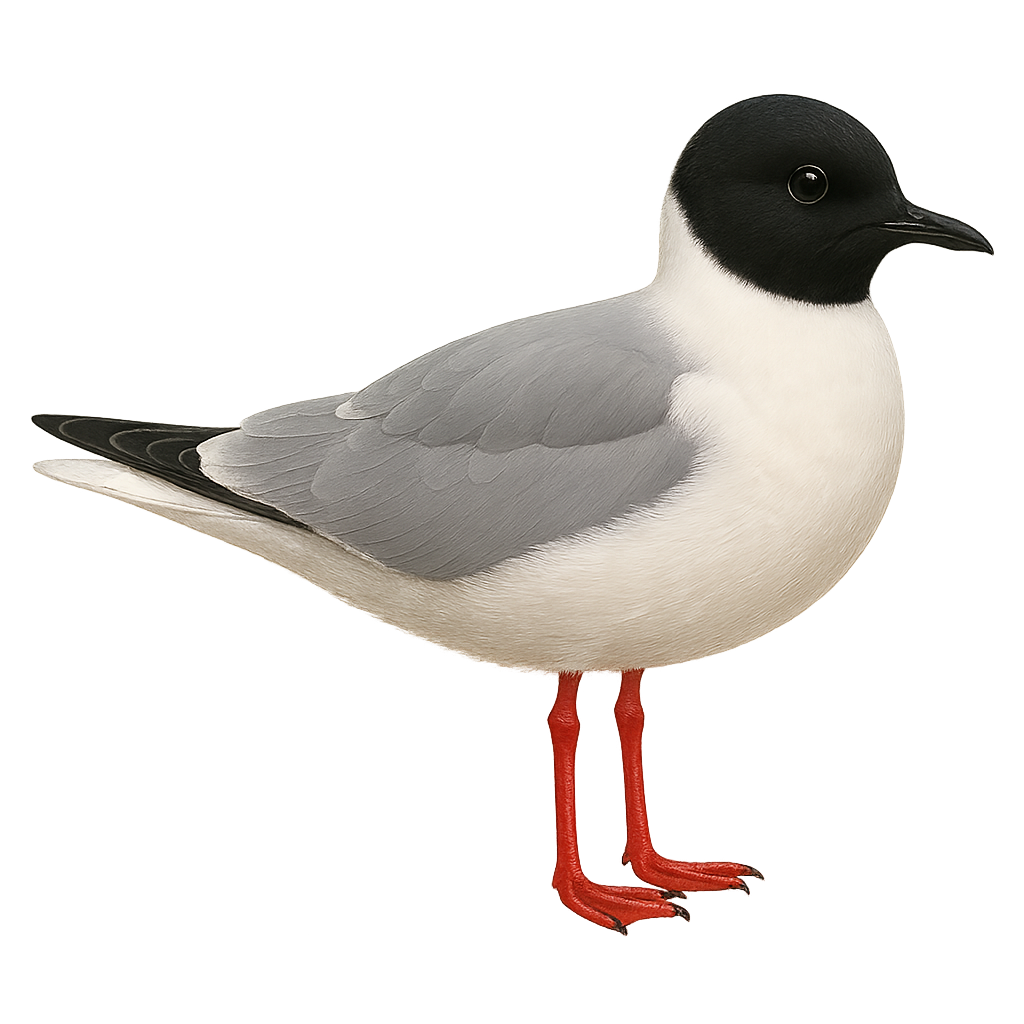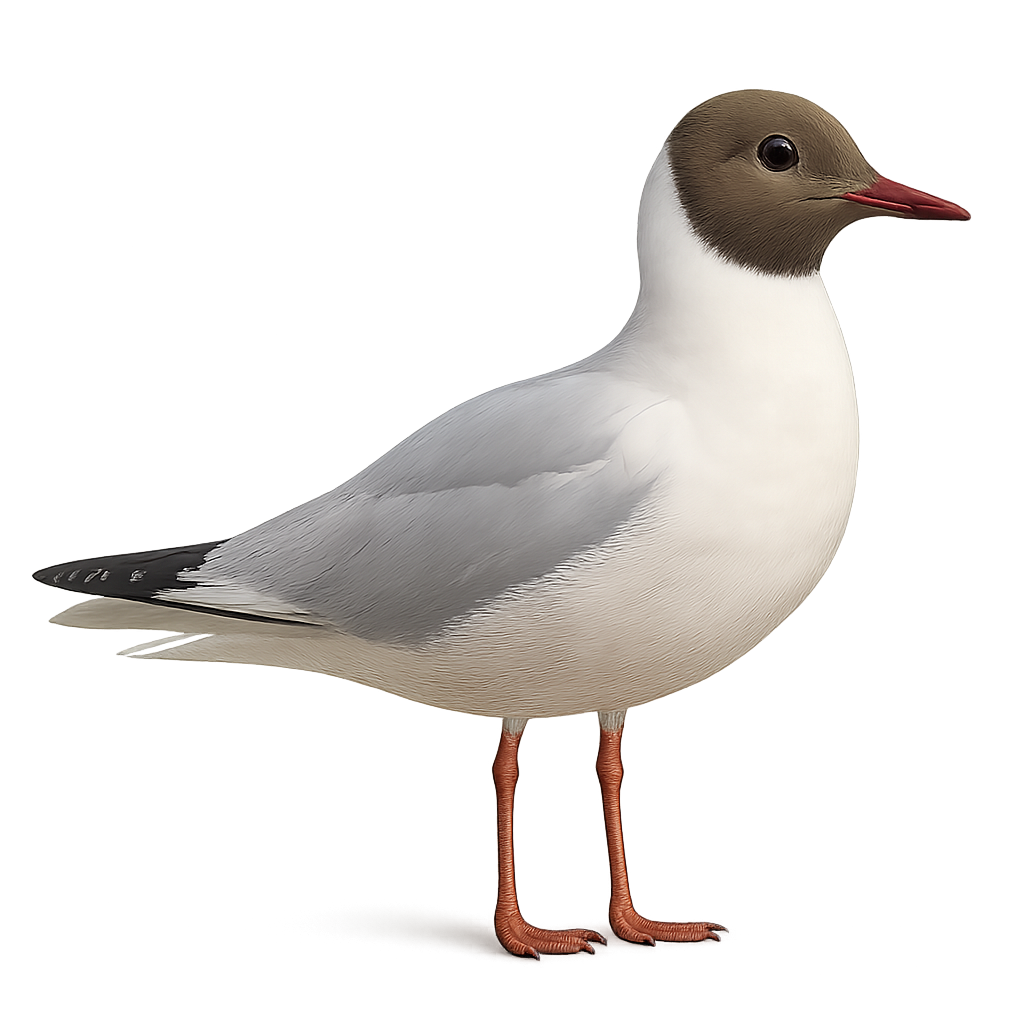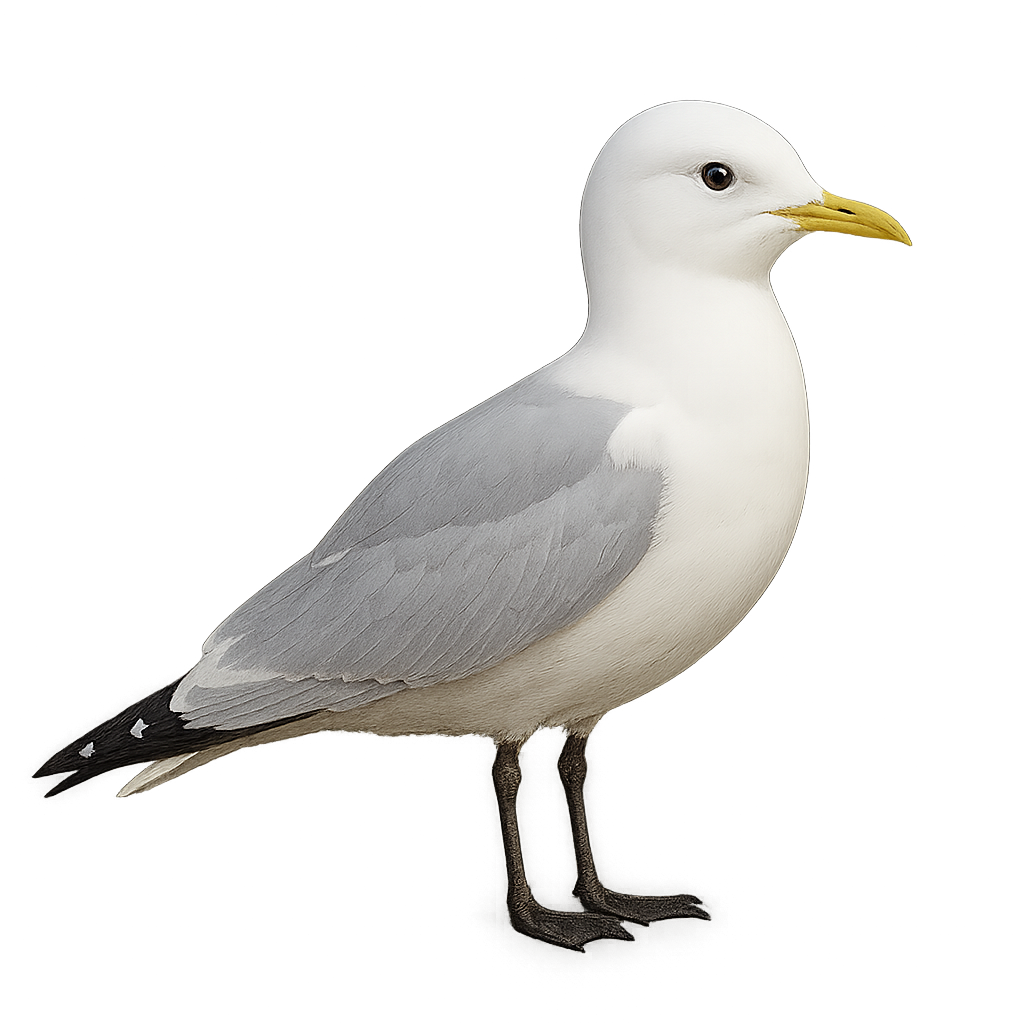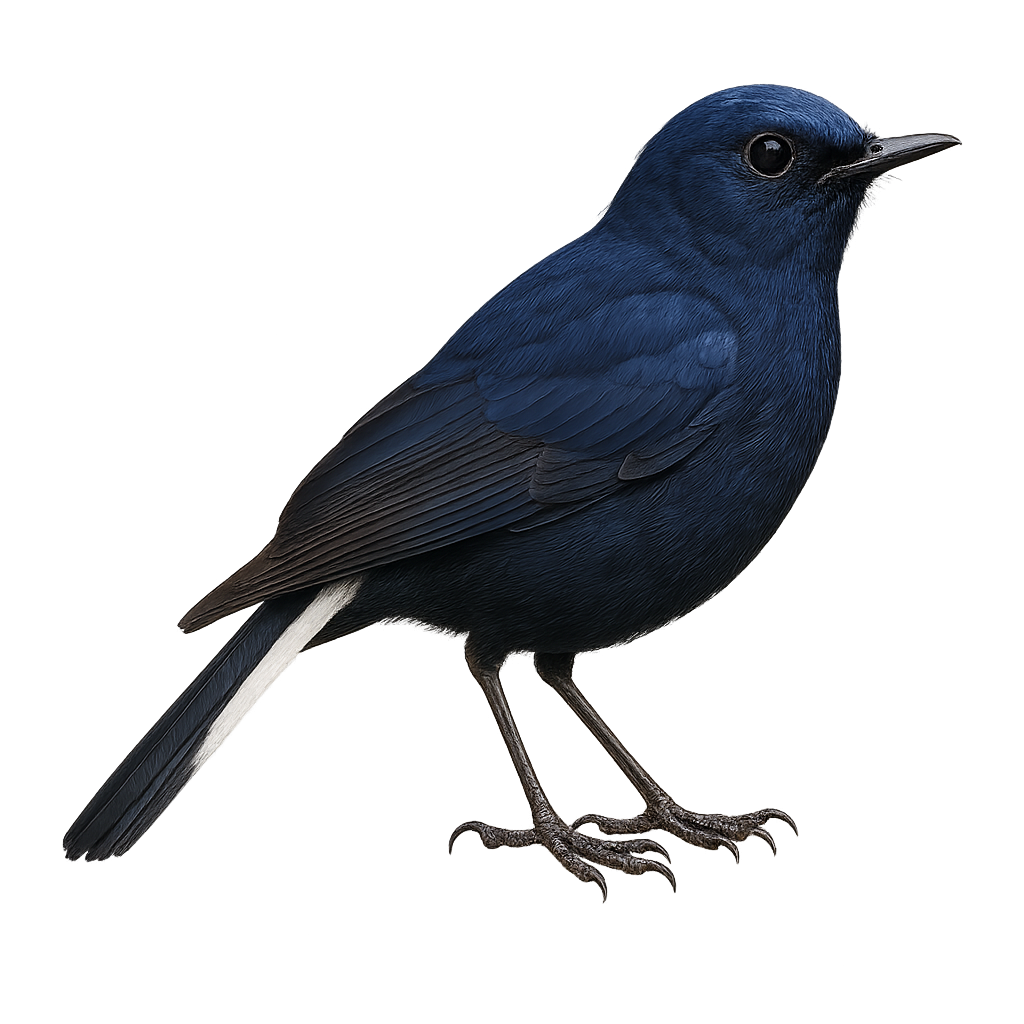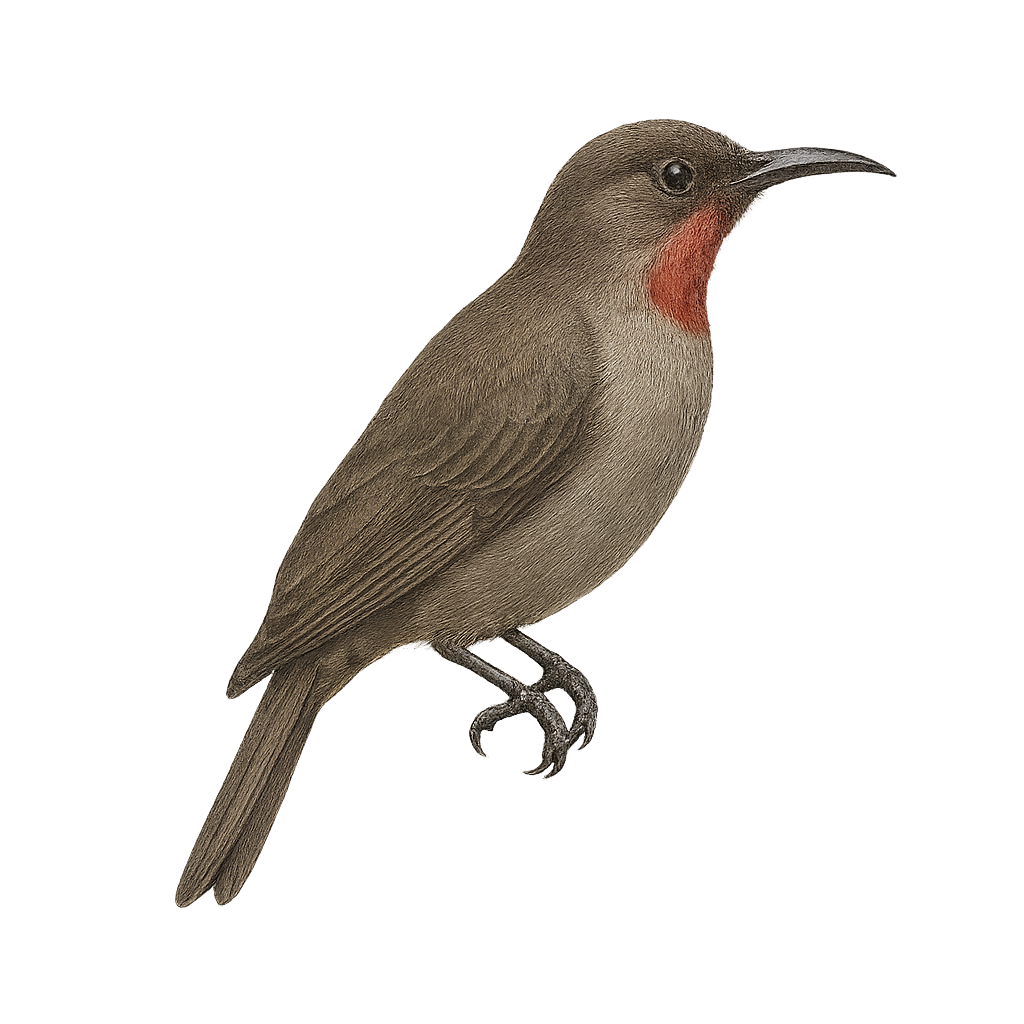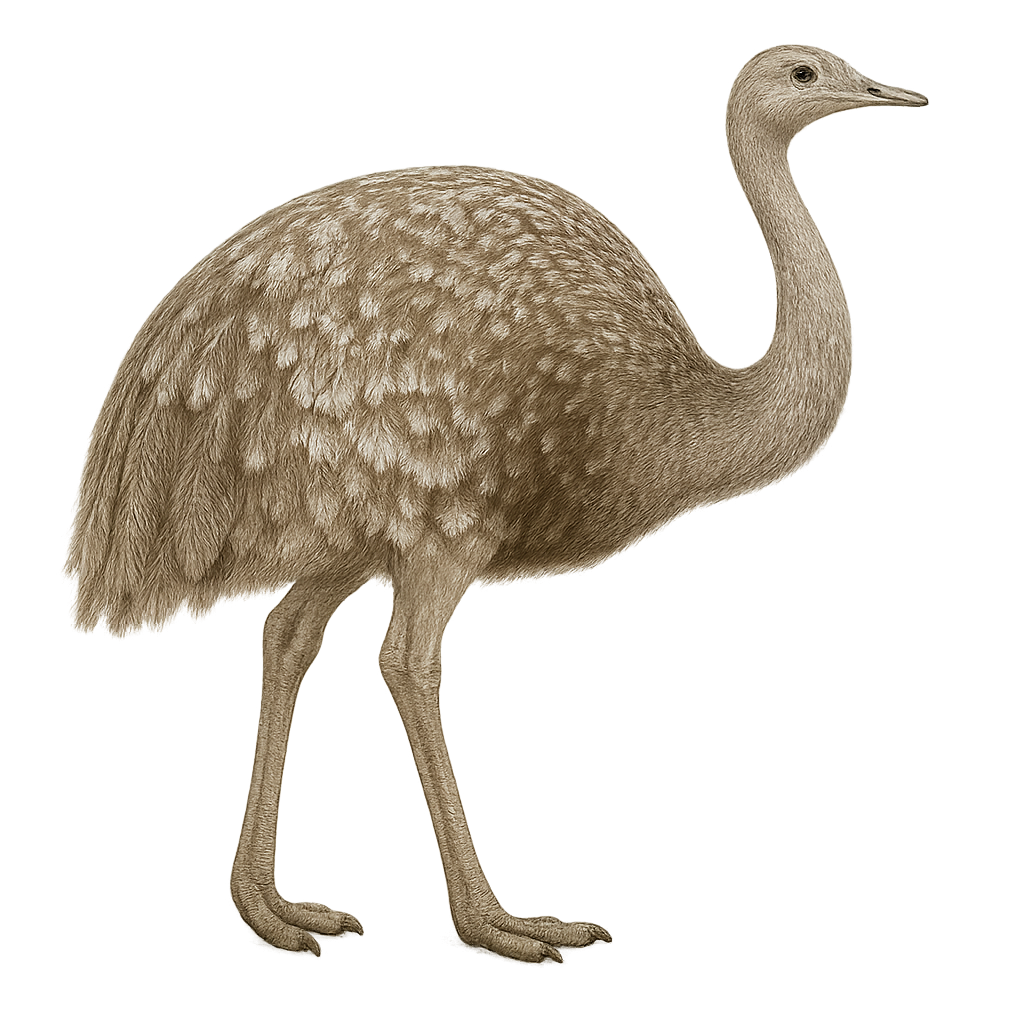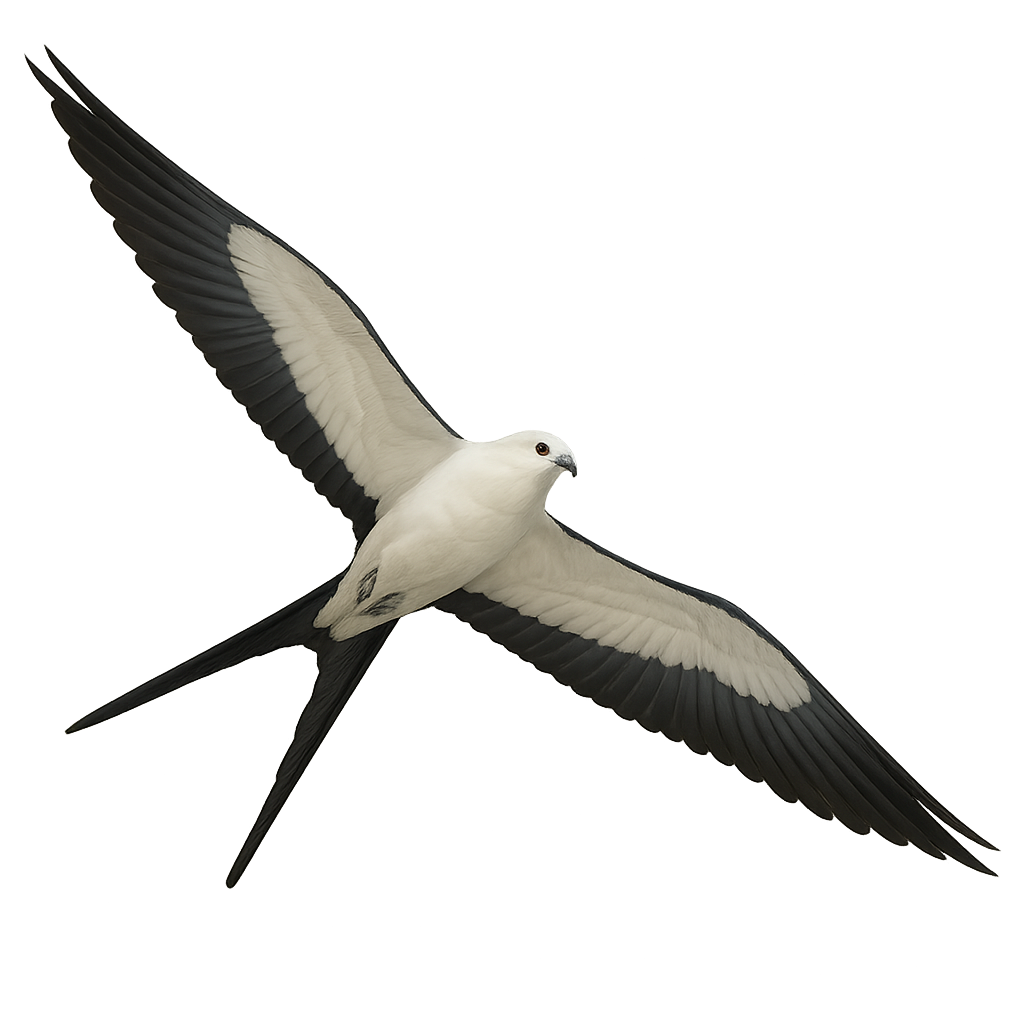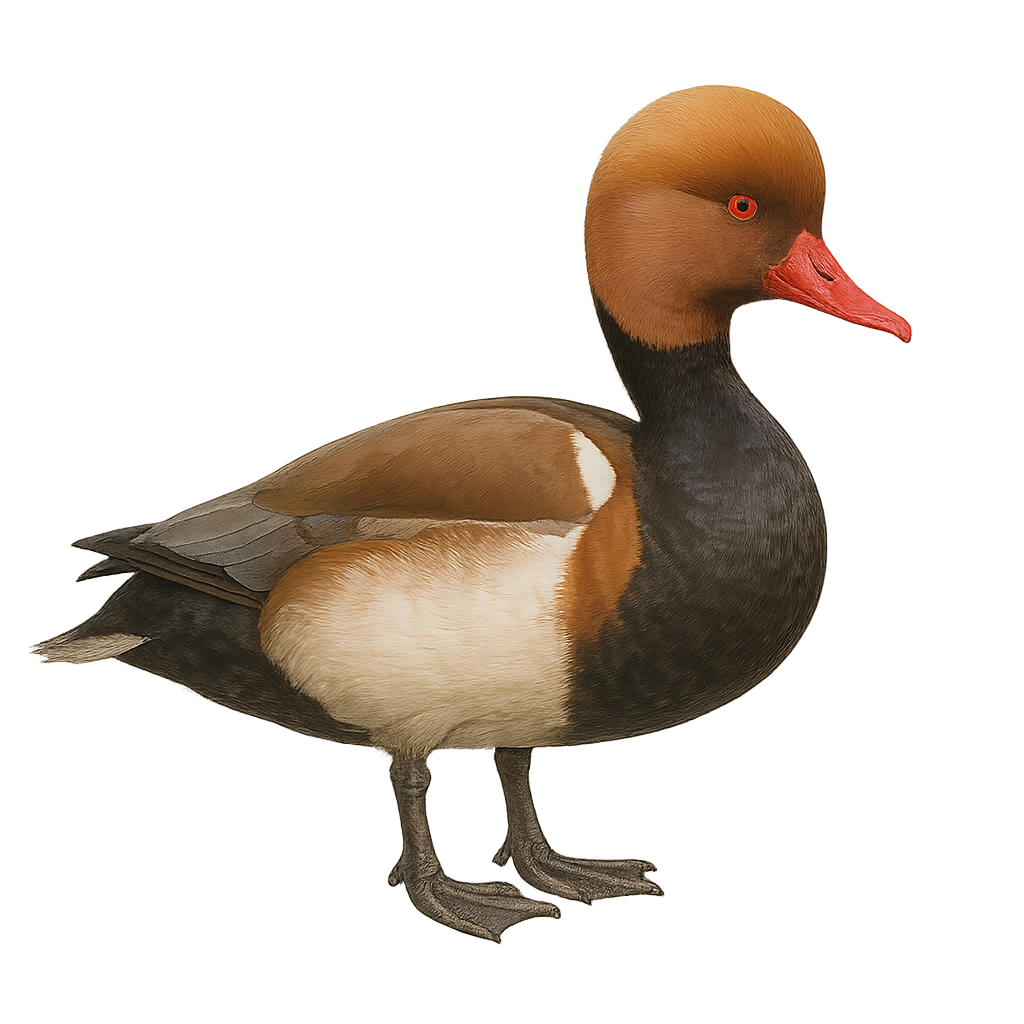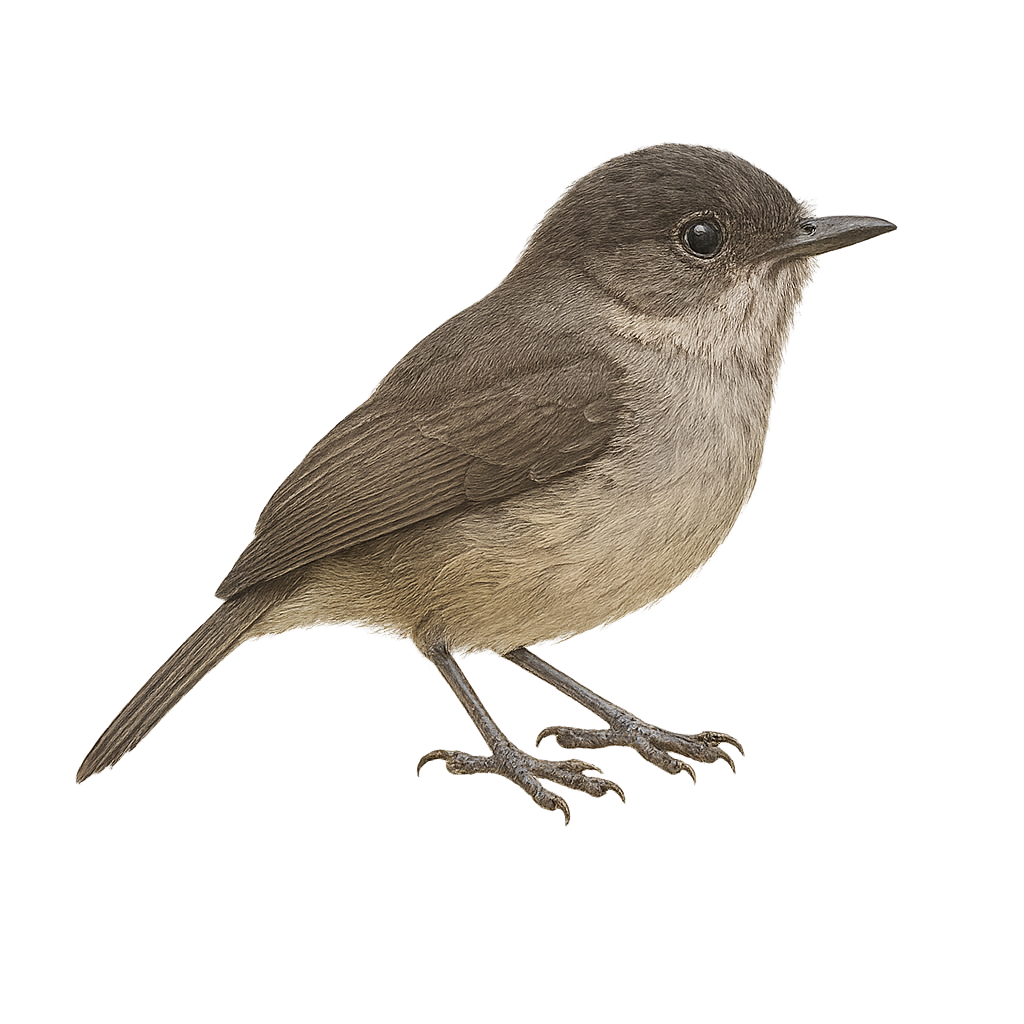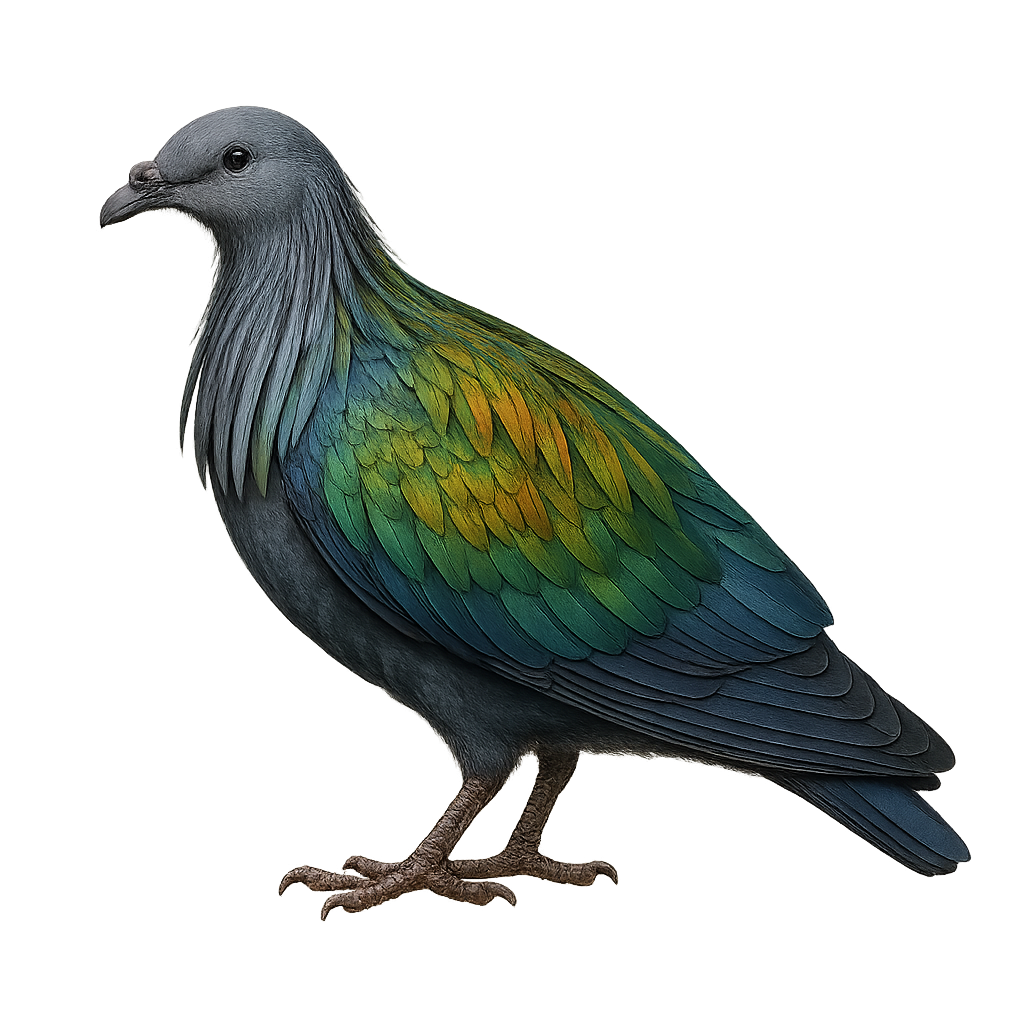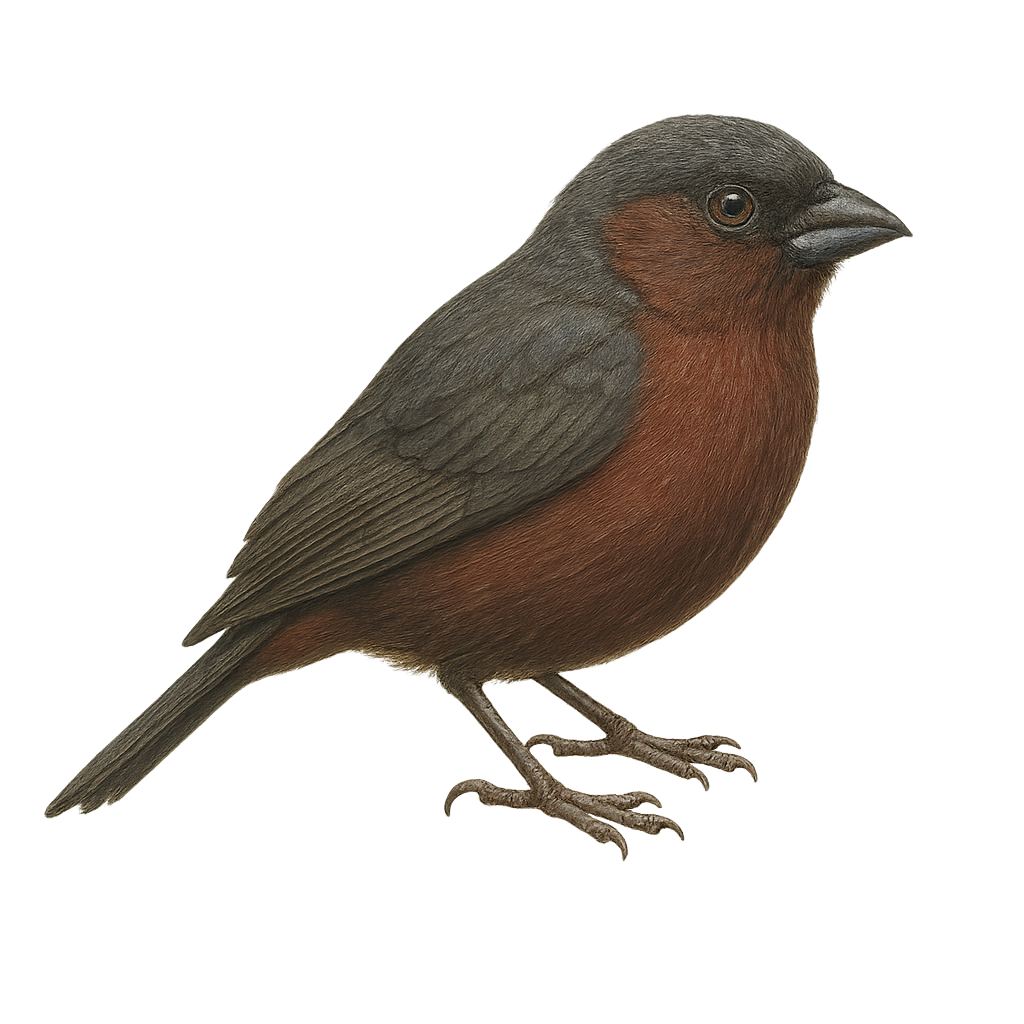The Hammond's Flycatcher, or Empidonax hammondii, is a small passerine bird belonging to the Tyrannidae family. It is primarily found in the coniferous forests of North America, especially in mountainous regions. This flycatcher is characterized by its gray-olive plumage, lighter belly, and wings marked with two white wing bars. Its beak is relatively short and dark, suitable for its insectivorous diet. During the breeding season, it builds its nest in trees, often at considerable heights. Its song is a key element for identification, consisting of a series of high-pitched, repetitive notes. Although discreet, it is often detected by its distinctive song.
The Willow Flycatcher, or Empidonax traillii, is a small passerine bird belonging to the Tyrannidae family. It is primarily recognized for its distinctive song and its ability to blend into wooded and wet habitats. This bird measures about 13 to 15 cm in length with olive-green plumage on its back and a paler belly. It frequents willow areas and other shrubs near water, where it primarily feeds on insects. A migratory bird, it spends its summers in North America and migrates to the southern United States and Central America for the winter. Its population is stable, although some subspecies are threatened by habitat loss.
The Fuscous Flycatcher, or Cnemotriccus fuscatus, is a small passerine bird belonging to the Tyrannidae family. It is primarily found in the tropical and subtropical forests of South America, particularly in Brazil, Argentina, and Bolivia. Its plumage is generally brown with lighter shades on the belly, allowing it to blend into its surroundings. This bird is known for its distinctive song, often heard at dawn. It feeds mainly on insects, which it catches in flight. The Fuscous Flycatcher is a territorial bird, often seen alone or in pairs. Although not currently threatened, deforestation could impact its natural habitats.
The Northern Tufted Flycatcher, Mitrephanes phaeocercus, is a small bird primarily found in the mountainous forests of Central and South America. It is distinguished by its brown tail and plumage in shades of gray and brown. This bird is often seen catching insects in flight, thanks to its agile and quick movements. It is also known for its melodious song, which echoes in the forests where it resides. Although it is relatively not very shy, it prefers dense habitats where it can hide from predators. Its presence is an indicator of the health of forest ecosystems.
The Black Phoebe, Sayornis nigricans, is a medium-sized bird belonging to the Tyrannidae family. It is characterized by its black and white plumage, with a black head, back, and tail contrasting with a white belly. This bird is often seen near streams, ponds, or wetlands, where it hunts flying insects. Its flight is marked by rapid wing beats and short glides. The Black Phoebe is a sedentary bird, primarily found in the southwestern United States, Mexico, and Central America. It is known for its melodious and repetitive song, often heard in spring and summer.
The Western Flycatcher, or Empidonax difficilis, is a small passerine bird belonging to the Tyrannidae family. It is primarily found along the western coast of North America, from southern Alaska to northern Mexico. This flycatcher is recognizable by its olive-green back and pale yellow belly, as well as its two white wing bars. It inhabits coniferous forests and moist wooded areas, where it primarily feeds on insects caught in flight. Its song is a key element in distinguishing it from other species in the Empidonax genus, as its appearance is very similar to its congeners.
The Greater Pewee, or Contopus pertinax, is a medium-sized bird belonging to the Tyrannidae family. It is primarily found in the pine and oak forests of mountainous regions in Central America and northern Mexico. Its plumage is generally gray-brown with a lighter chest, and it is distinguished by its slightly raised crest. This pewee is often seen perched on exposed branches, from where it launches to catch flying insects. Its song is a clear, melodious whistle, often heard at dawn. Although primarily insectivorous, it may occasionally feed on small fruits. It is a solitary bird but can be observed in small groups during migration.
The Least Flycatcher is a small passerine bird belonging to the Tyrannidae family, known for its distinctive "chebec" call. It inhabits deciduous forests and wooded areas across North America. With its olive-gray plumage, white belly, and two white wing bars, it is easily recognizable. This migratory bird primarily feeds on insects, which it catches in flight. Often seen perched, it watches for prey with keen eyes. Despite its small size, the Least Flycatcher plays a crucial role in forest ecosystems by helping control insect populations.
The Swallow-tailed Gull, Creagrus furcatus, is a unique seabird primarily found in the Galápagos Islands. It is distinguished by its forked tail and grey and white plumage. Its black bill is tipped with red, and its eyes are surrounded by a red ring, giving it a piercing look. This gull is nocturnal, a rarity among seabirds, and feeds mainly on fish and squid caught in flight. It nests on rocky cliffs, usually laying a single egg. Its behavior is relatively tolerant towards humans, allowing for close observation.
The Grey-headed Gull, Chroicocephalus cirrocephalus, is an elegant and distinctive bird, recognizable by its pale grey head contrasting with its white body and light grey wings. It primarily inhabits coastal areas, estuaries, and inland lakes in Africa and South America. During the breeding season, it forms noisy colonies, often in association with other gull and tern species. Its diet is varied, including fish, insects, and human waste. This species is known for its graceful flight and characteristic high-pitched calls. Although its conservation status is currently "least concern," it remains sensitive to human disturbances and habitat degradation.
The Silver Gull, Chroicocephalus novaehollandiae, is a medium-sized seabird known for its bright white plumage, grey wings, and red legs. It is widespread in Australia and New Zealand, frequenting coasts, harbors, and inland waters. An opportunistic feeder, it consumes fish, invertebrates, and human waste. Its call is loud and distinctive. It nests in colonies, often on islands or isolated beaches, typically laying two to three eggs. Although often in contact with humans, it remains somewhat wary.
The Laughing Gull, Leucophaeus atricilla, is a medium-sized bird known for its distinctive plumage and characteristic call. During the breeding season, it sports a black head, gray back, and wings with black tips. The rest of its body is white, and its bright red bill contrasts with its plumage. Outside the breeding season, its head turns white with gray spots. It primarily inhabits coasts and islands, feeding on fish, crustaceans, and waste. Sociable by nature, it often gathers in large colonies. Its adaptability to urban environments makes it a common sight along the Atlantic coasts and the Gulf of Mexico.
The Bonaparte's Gull, Chroicocephalus philadelphia, is a medium-sized bird, measuring about 28 to 38 cm in length with a wingspan of 76 to 84 cm. It is distinguished by its black head during the breeding season, slender black bill, and reddish legs. Outside the breeding season, its head turns white with a dark ear spot. It frequents lakes, rivers, and coasts, feeding mainly on small fish, insects, and crustaceans. A migratory bird, it breeds in the boreal regions of North America and winters along the Atlantic and Pacific coasts. Its flight is agile and swift, often compared to that of a tern.
The Franklin's Gull, Leucophaeus pipixcan, is a medium-sized bird known for its black head during the breeding season, red bill, and red legs. Its plumage is mainly white with gray wings and black wingtips. Often seen in large flocks, especially during migration, it originates from the North American prairies and migrates to South America for the winter. It primarily feeds on insects, small fish, and crustaceans, catching them in flight or while swimming. The Franklin's Gull is known for its sharp calls and graceful flights. It nests in colonies in marshes and shallow lakes, building floating nests with aquatic vegetation.
The Brown-hooded Gull, or Chroicocephalus maculipennis, is a medium-sized bird known for its chocolate-brown head during the breeding season and its white and grey plumage. It primarily inhabits wetlands, lakes, and coastal areas in South America. Its diet is varied, including fish, insects, and small crustaceans. Often seen in groups, it gracefully flies over water or rests on shores. Although its conservation status is currently of least concern, it is sensitive to environmental changes, particularly pollution and habitat destruction.
The Little Gull, Hydrocoloeus minutus, is the smallest gull species, measuring about 25 to 30 cm in length with a wingspan of 60 to 78 cm. It is characterized by its delicate plumage, with a pearl-gray back and white wings tipped with black. During the breeding season, its head turns black, contrasting with its white body. It inhabits wetlands, lakes, and estuaries, feeding mainly on small fish and aquatic insects. A migratory bird, it breeds in northern regions and winters further south. Its flight is light and graceful, often compared to that of a swallow. Though discreet, it is appreciated by birdwatchers for its elegance and social behavior.
The black-headed gull is a small gull easily recognized by its black head (in summer), white plumage, and light gray wings. It is primarily found in Europe and Asia and is often seen near bodies of water, in harbors, and estuaries. It is omnivorous, feeding on small fish, insects, and sometimes human scraps. This gull is also known for its aerial acrobatics, often seen flying and diving into the water to catch its food.
The Black-legged Kittiwake is a medium-sized gull, measuring about 40 to 45 cm in length, with a wingspan of 90 to 110 cm. It is easily recognizable by its white plumage with light gray wings and a black head during the breeding season. What particularly distinguishes this gull is the shape of its tail, which is deeply forked, hence its name "tridactyla." It primarily inhabits coastal regions of the North Atlantic, notably in rocky areas, cliffs, and subarctic islands. The Black-legged Kittiwake feeds mainly on fish, crustaceans, and marine insects. It is often seen flying over the water in search of food or resting on rocks. Although the population of this species is stable, it may be threatened by human disturbances, particularly the disruption of breeding colonies and marine pollution.
The White-tailed Robin is a captivating bird, known for its striking appearance and intriguing behavior. It features a glossy blue-black plumage with a distinctive white tail, making it easily recognizable. This bird prefers dense, humid forests, often situated at higher altitudes. It is primarily insectivorous but can also feed on small fruits. The White-tailed Robin is a rather discreet bird, often seen alone or in pairs. It is known for its melodious song that echoes through the undergrowth. Although it is relatively tolerant of human presence, it remains cautious and prefers to keep its distance.
The Red Myzomela, or Myzomela eques, is a small bird with striking bright red plumage, accented by black on its wings and tail. This nectarivore is often found in tropical rainforests, mangroves, and flower gardens, feeding primarily on nectar but also on insects. Its slender, curved beak is perfectly adapted to reach the nectar of flowers. Known for its melodious song and agile movements among branches, it is generally solitary but can sometimes be seen in small groups, especially during the breeding season. Its adaptability to various habitats makes it a resilient species in the face of environmental changes.
The Crimson Myzomela, scientifically known as Myzomela rubratra, is a small, vibrant bird with predominantly red plumage and black accents on its wings and tail. It is native to several Pacific islands, including New Caledonia and the Solomon Islands. This nectarivore primarily feeds on flower nectar, but also consumes insects and fruits. Its slender, curved beak is perfectly adapted for nectar extraction. The Crimson Myzomela is often found in tropical rainforests, mangroves, and gardens. Known for its melodious song and active nature, it is frequently seen flitting from flower to flower. Although its habitat is threatened by deforestation, it is currently listed as of least concern by the IUCN.
The Pterocnemia pennata, commonly known as Darwin's rhea, is a large, flightless bird native to the arid and semi-arid regions of South America. It is characterized by its grey-brown plumage and long legs adapted for fast running. Often mistaken for an ostrich, it is smaller in size. Darwin's rheas live in groups and primarily feed on plants, seeds, and insects. They are known for their complex social behavior, especially during the breeding season when males build nests and incubate eggs. Although they can cover large distances, their habitat is threatened by agricultural expansion and hunting.
The Swallow-tailed Kite is an elegant and graceful raptor, easily recognizable by its long forked tail and black-and-white plumage. It is often seen soaring effortlessly in the skies of subtropical and tropical regions of the Americas. This bird of prey primarily feeds on insects and small vertebrates, which it catches in flight. Known for its impressive migrations, it travels long distances between its breeding grounds in North America and its wintering areas in South America. The Swallow-tailed Kite prefers open habitats such as marshes, riparian forests, and grasslands, where it can easily spot its prey.

The Nestor superbe is a large parrot endemic to New Zealand, easily recognizable by its bright green plumage and reddish-edged feathers on its neck and under its wings. It measures about 48 cm in length and weighs between 800 and 1,200 g. This parrot is one of the most intelligent of its kind, capable of using tools to solve complex problems and adapt to a variety of environments. The Nestor superbe is omnivorous and opportunistic, feeding on fruits, roots, seeds, small animals, as well as carcasses of dead animals. It is particularly known for its curious and sometimes destructive behavior, earning it a reputation as a "thief" in some areas. The Nestor superbe primarily inhabits the alpine mountains of the South Island of New Zealand, where it resides at high altitudes. While the species is protected, it remains vulnerable to habitat loss and human threats such as trapping and vehicle collisions. The Nestor superbe population has declined over the years, but conservation efforts are underway to ensure its survival.
The Nestor meridionalis, commonly known as the Kea, is a parrot endemic to New Zealand. Known for its intelligence and curiosity, the Kea is often seen interacting playfully with its environment. It has predominantly olive-green plumage with flashes of red under its wings, making it easily identifiable in flight. Primarily inhabiting alpine areas, it is well adapted to cold and harsh conditions. Unfortunately, the Kea is classified as a vulnerable species due to habitat loss and human threats. Its ability to solve complex problems and its social behavior make it a fascinating subject of study for ornithologists.
The Red-crested Pochard is a medium-sized diving duck, measuring between 53 and 58 cm in length with a wingspan of 84 to 88 cm. The male is notable for its rounded, bright reddish-orange head, vivid red bill, black chest, and white flanks. The female is more subdued, with brown plumage, pale cheeks, and a dark bill. This species inhabits eutrophic lakes and ponds rich in aquatic vegetation, often bordered by reed beds. It primarily feeds on aquatic plants like pondweeds and charophytes, but also consumes aquatic invertebrates, including mollusks and insects. Migratory, the Red-crested Pochard winters around the Mediterranean and the Black Sea. Although listed as Least Concern by the IUCN, it is sensitive to the degradation of wetlands.
The Dark Newtonia, or Newtonia amphichroa, is an endemic bird of Madagascar, belonging to the Vangidae family. This modest-sized bird is primarily recognizable by its dark throat, contrasting with its brownish plumage. It mainly inhabits the island's humid forests, where it feeds on insects and other small invertebrates. The Dark Newtonia is a discreet bird, often difficult to observe due to its suspicious behavior and dense habitat. Although its conservation status is not alarming, deforestation poses a potential threat to its populations. Its reproductive biology remains poorly documented but is assumed to be similar to other Newtonia species.
The Nicobar Pigeon, or Caloenas nicobarica, is a fascinating bird known for its iridescent plumage with metallic shades of green, blue, and copper. It is endemic to the islands of the Indian and Pacific Oceans, particularly the Nicobar Islands, from which it gets its name. This medium-sized pigeon measures about 40 cm in length and is distinguished by its short white tail, contrasting with its colorful body. The Nicobar Pigeon is primarily frugivorous, feeding on fruits, seeds, and small invertebrates. It plays a crucial role in seed dispersal, contributing to the regeneration of tropical forests. Unfortunately, it is threatened by hunting and habitat loss.
The Chestnut-breasted Nigrita is a small African bird belonging to the Estrildidae family. It is characterized by its chestnut-brown breast and black body, giving it an elegant and distinctive appearance. This bird is primarily found in the tropical rainforests and wooded savannas of Central and West Africa. Often seen in small groups, it feeds on seeds and insects. The Chestnut-breasted Nigrita is known for its melodious song and complex social behaviors. Although its habitat is threatened by deforestation, it is currently listed as a species of least concern by the IUCN.
The Morepork, or Ninox novaeseelandiae, is a medium-sized owl native to New Zealand and Australia. It is easily identified by its brown plumage speckled with white and its large yellow eyes. This nocturnal raptor is an agile hunter, feeding primarily on insects and small mammals. Its distinctive call, resembling "more-pork," is often heard in forests and wooded areas. The Morepork is a solitary bird, although it can be seen in pairs during the breeding season. It prefers dense forest habitats but can also be found in urban gardens and parks.


